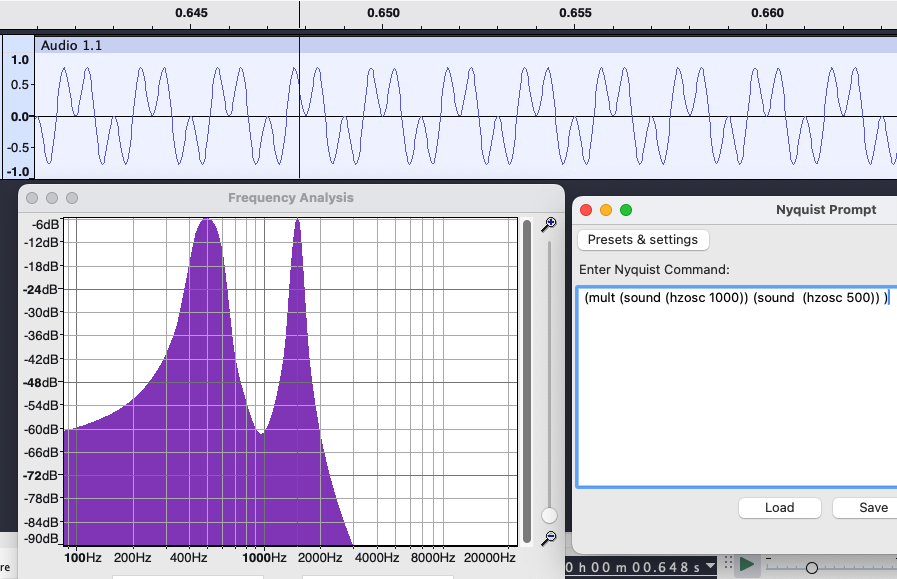hpr4291 :: AM on the Nyquist Prompt
Lee experiments with amplitude modulation and learns lisp in the process
Hosted by Lee on Monday, 2025-01-13 is flagged as Clean and is released under a CC-BY-SA license.
lisp, nyquist, radio.
2.
Listen in ogg,
spx,
or mp3 format. Play now:
Duration: 00:12:35
HAM radio.
A series about all things Amateur Radio/HAM Radio.
Studying for a license from the Radio Society of Great Britain lead to an interesting experiment.
What happens if one sine wave is modulated with another sine wave? Similar to sending a pure tone over AM radio.
Apparently the result is two frequencies, one equal to the difference of the two original frequencies and one equal to the sum.
Creating two tones and multiplying them in Nyquist Prompt in Audacity then plotting the resulting spectrum concurs.
(mult (sound (hzosc 1000)) (sound (hzosc 500)))The original tones were 1 kHz and 0.5 kHz.
The result was a peak at 0.5 kHz (the difference) and one at 1.5 kHz (the sum).

On another note, the manual mentions in practice if one of the tones is the carrier frequency and one of them is the signal, then the carrier should not be modulated all the way down to zero or all the way up to maximum. This avoids distortion and clipping so the quality is better when received. It is also more power efficient so the transmission can travel further given the transmitter has a limited power output.
